Let's talk Labrador Retrievers
Meet the Labrador Retriever, one of America's most popular dog breeds! Playful and devoted, they are known for their open and enthusiastic temperaments, which you'll soon come to adore. They are highly active dogs, with webbed toes and an "otter-like" tail, making them perfectly suited for swimming.
Official name: Labrador Retriever
Other names: Labrador, Lab
Origins: United Kingdom
Drooling tendencies
4 out of 5Grooming needs
3 out of 5Shedding Level
5 out of 5Barking tendencies
2 out of 5Energy level*
4 out of 5Compatibility with other pets
5 out of 5Warm weather?
3 out of 5Cold weather?
4 out of 5Suited to apartment living
1 out of 5Can stay alone
2 out of 5Family pet?*
4 out of 5
| Male | Female |
|---|---|
| Height | Height |
| 60 - 65 cm | 55 - 60 cm |
| Weight | Weight |
| 30 - 40 kg | 22 - 32 kg |
| Life stages | |
|---|---|
| Puppy | Adult |
| 2 to 15 months | 15 months to 5 years |
| Mature | Senior |
| 5 years to 8+ years | From 8 years |
| Baby | |
| Birth to 2 months | |
Drooling tendencies
4 out of 5Grooming needs
3 out of 5Shedding Level
5 out of 5Barking tendencies
2 out of 5Energy level*
4 out of 5Compatibility with other pets
5 out of 5Warm weather?
3 out of 5Cold weather?
4 out of 5Suited to apartment living
1 out of 5Can stay alone
2 out of 5Family pet?*
4 out of 5
| Male | Female |
|---|---|
| Height | Height |
| 60 - 65 cm | 55 - 60 cm |
| Weight | Weight |
| 30 - 40 kg | 22 - 32 kg |
| Life stages | |
|---|---|
| Puppy | Adult |
| 2 to 15 months | 15 months to 5 years |
| Mature | Senior |
| 5 years to 8+ years | From 8 years |
| Baby | |
| Birth to 2 months | |
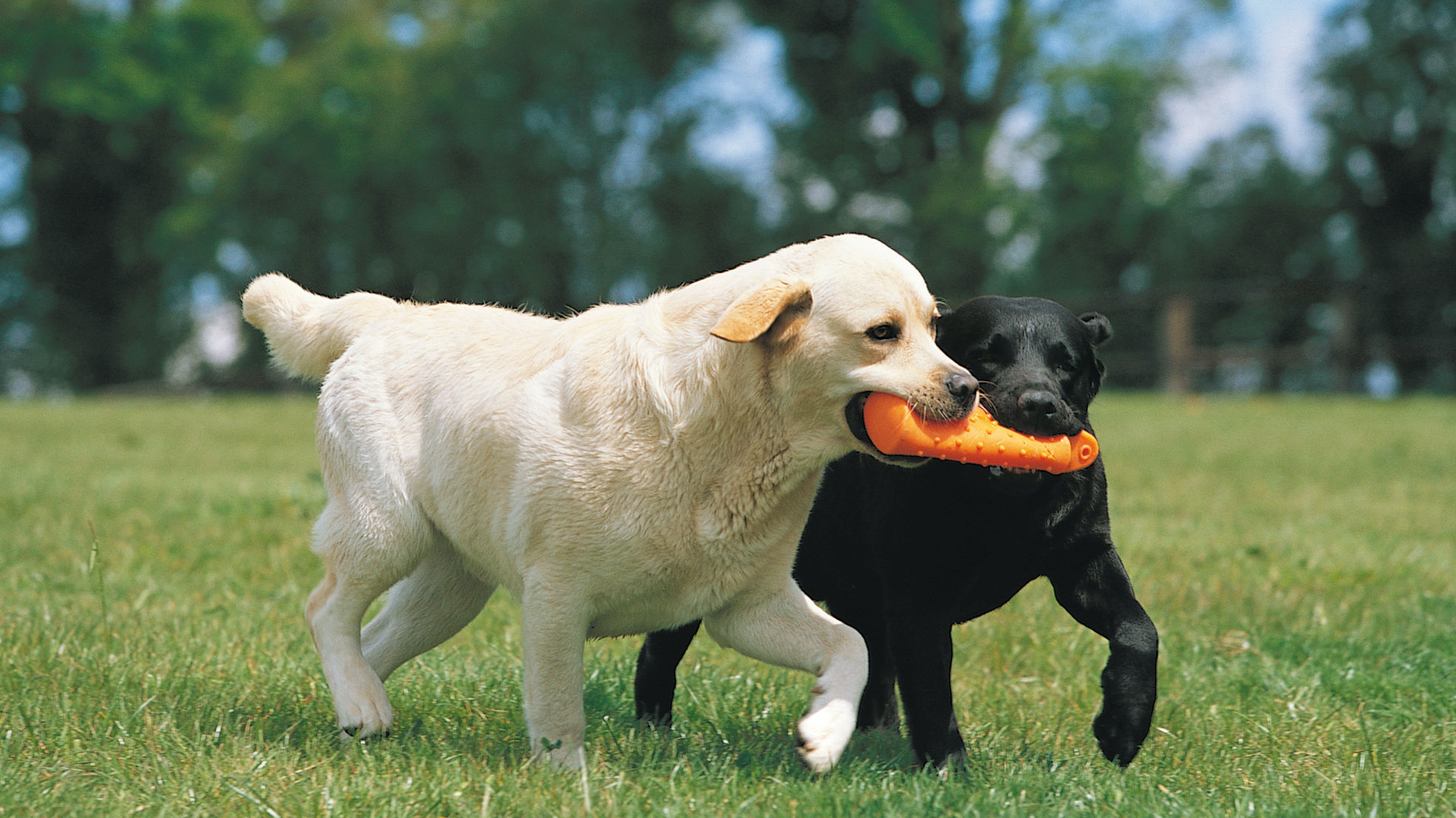
Get to know the Labrador
All you need to know about the breed
The Labrador Retriever is a versatile and lovable breed, known for its friendly demeanor, boundless energy, and being up for anything—including training. Due to the breed's inherent
intelligence, they are quite easy to train. Their close bond with their owners makes them a great pet for families as they are good with children. Often trained as therapy dogs, the
Labrador's characteristics also make them great service animals.
It's important to remember that this breed has one fairly big motivator: their appetite. This can make it challenging to maintain a Labrador at a healthy weight, perhaps more so than
with other breeds. However, with a balanced, right-for-Labradors diet, plenty of exercise, and a good vet, you'll have yourself a healthy, content dog.
Quite robust and muscular, they have powerful jaws and a large nose. Their eyes, usually brown or hazel-colored, are full of softness, intelligence, and devotion. When a Labrador
Retriever looks at its owner, the connection is clear for all to see.
Labradors coats are short and thick, without waves or feathering, with a weather-resistant undercoat. You can find the breed in yellow (ranging from light cream to fox-red), brown, or
all-black. Their tails, often energetically in movement, are quite thick at birth. Completely covered with dense hair, it gives the Labrador's tail the appearance of roundness, or what is
commonly called an 'otter tail.' Good advice: when a Labrador is happy to see you, don't stand in the path of its tail!
Known for their friendly, kind temperaments, the Labrador Retriever breed is supremely adaptable to almost any living situation. As a family dog, they will somehow gather the
patience to wait for the children to get home from school and excitedly head into the yard to play with them. While a Labrador will bark when it hears strange or loud noises, they
don't make great guard dogs when well-socialized, they are quite devoid of aggressiveness, bearing no ill will toward man or their fellow pets.
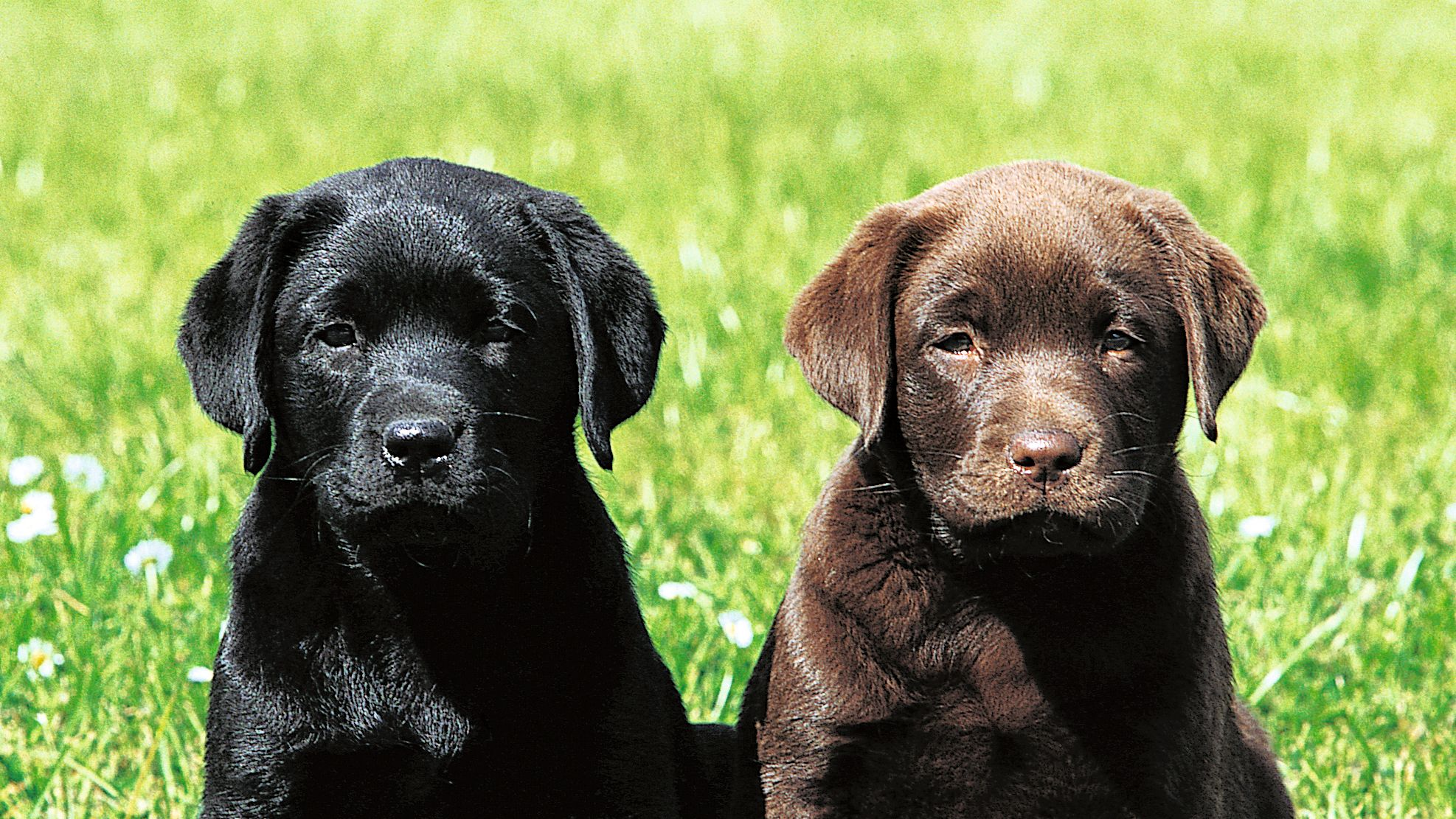
Facts about Labrador Retrievers
1. Prone to health conditions
Labrador Retrievers can be prone to certain health concerns, like hip dysplasia (a reputable breeder will have tested the parents before mating them to help prevent the puppy from having it) to ACL tears—yes, like humans. With recommended exams, a balanced diet, and check-ups, most problems can be found early.
2. Record breaker
A labrador named Endal was awarded the PDSA Gold Medal, known as the
animal equivalent of the George Cross, for exceptional acts of bravery and
loyalty.

Enter our Spring Giveaway
You could give your dog 6 months of tailored nutrition on us! Don’t miss out. Enter today for your chance to win.
History of the breed
However, the answer to Where do Labradors come from? isn't that straightforward. The breed as we know it today is believed to have been established in Great Britain sometime in the early 1800s. Adventuring aristocrats and returning fishermen brought the Labrador's ancestor back to England with them, where the dogs found early fame for their hardy constitutions and loyal dispositions.
During the late 19th century, British breeders refined the Labrador Retriever's traits, emphasizing their gentle nature, intelligence, and adaptability. They standardized the breed's physical characteristics and temperament, establishing the foundation for the modern Labrador Retriever we know today.
The American Kennel Club (AKC) officially recognized the Labrador Retriever in 1917, while The Kennel Club in England registered them in 1903. Since then, Labs have consistently been among the most popular dog breeds worldwide, valued for their versatility as working dogs, companions, and family pets. Their friendly disposition, intelligence, and willingness to please continue to endear them to millions of dog lovers globally!
From head to tail
Physical characteristics of Labrador Retrievers
1.Ears
2.Coat
3.Fur
4.Tail
5.Legs and spine
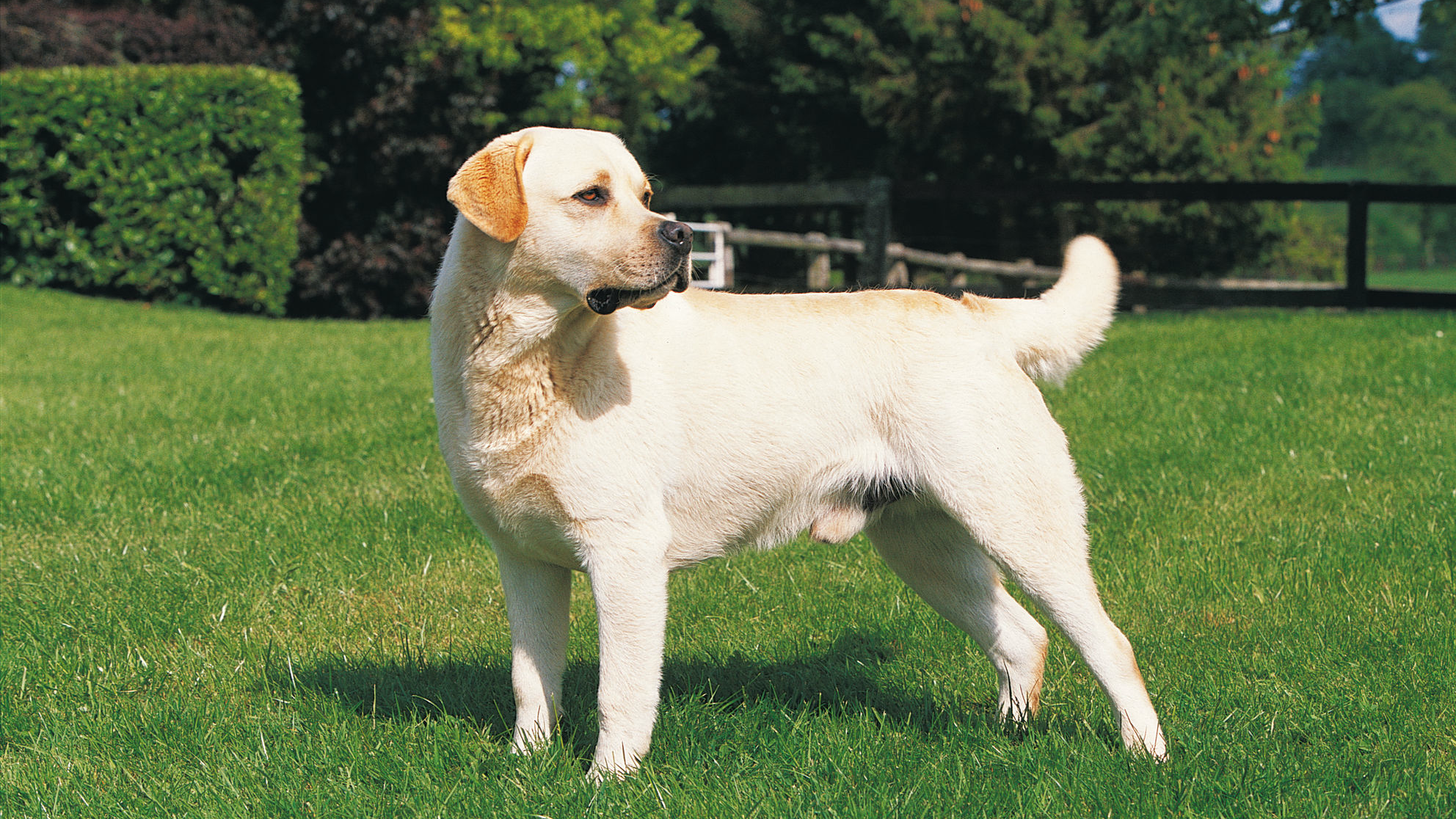
Things to look out for
From specific breed traits to a general health overview, here are some interesting facts about your Labrador Retriever.
The Labrador Retriever can be prone to obesity
Regular exercise and a balanced diet are Labrador essentials to offset their propensity for
obesity. This will also minimize joint problems such as hip or elbow dysplasia, which can lead
to malformation of the hips and arthritis, as well as related conditions in the elbow.
Sometimes painful, dysplasia can reduce the Labradors mobility, requiring surgery to fix. The
good news? Early detection is key to managing this condition, and regular check-ups can help
you and your vet stay on top of it.
Prone to ear infections
Labrador Retrievers can be prone to ear infections/otitis. While sometimes linked to lifestyle
activities like swimming—something Labs love to do—one of the reasons Labradors are
more likely to get recurring ear infections is because of their pinna, the large exterior part of
the ear which blocks the free circulation of air so moisture can get trapped in the ear canal. If you
notice anything different in your Labrador Retriever's health/behavior (smelly ears, discharge
coming from the ear, shaking the head, head tilted) you should consult with your veterinarian.
They can also be prone to ligament tears
Cruciate ligaments are the muscles that hold the knee joints together. If they tear, it can be
very painful for a dog as it allows their knee joints to slide back and forth. This is a
common orthopedic injury in active dogs that have a straight up-and-down hind leg structure
like the Labrador Retriever. Labrador Retrievers are actually 2-5 times more likely to suffer from it than any other breed.³ Luckily, it is fairly straightforward to spot issues before they appear by booking a genetic test to see if they are likely to develop this trait.³
Tailored nutrition for Labrador Retrievers
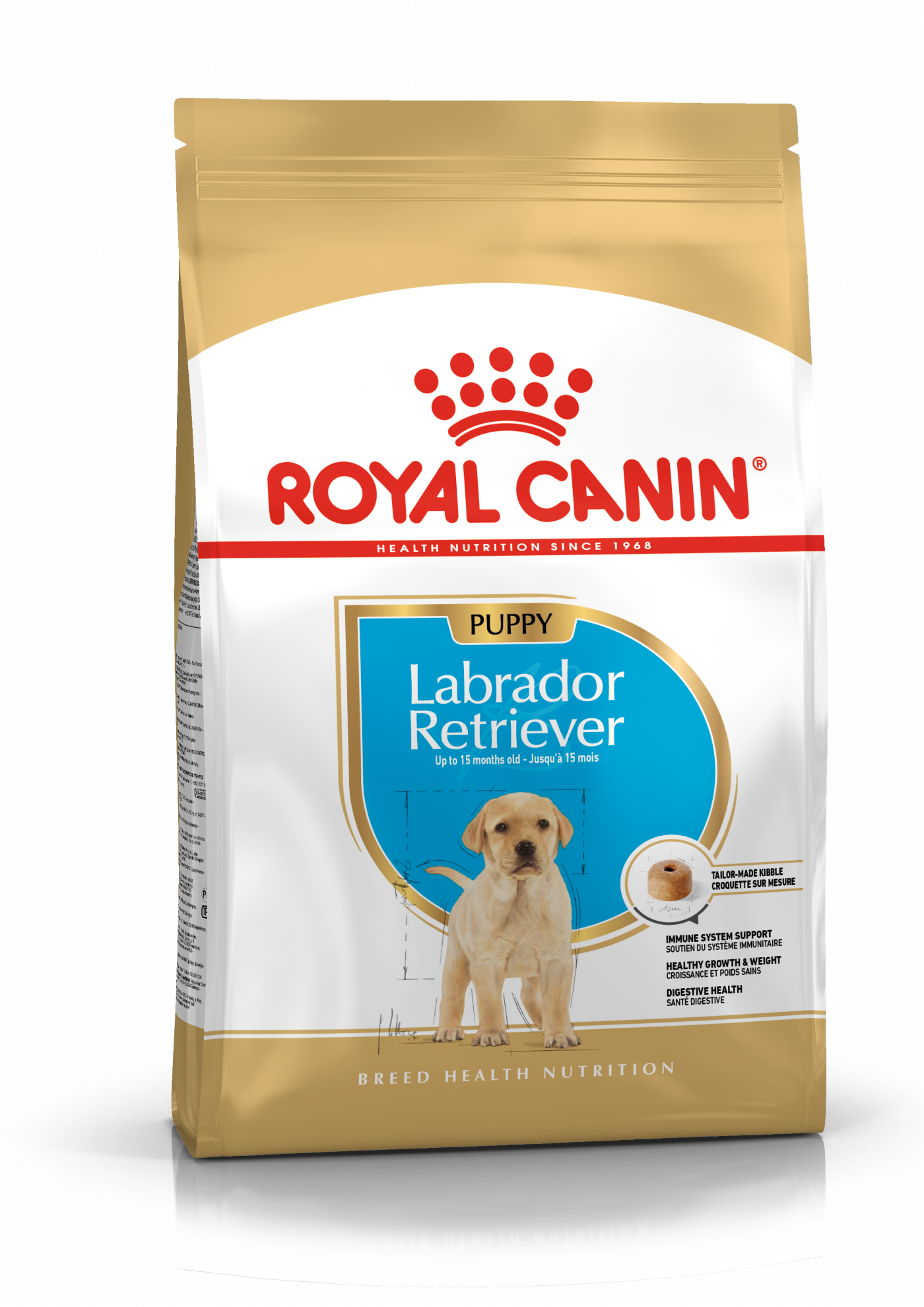
When choosing food for a Labrador Retriever, there are many factors to consider: their age, lifestyle, activity level, physiological condition, and health including potential sickness or sensitivities. Food provides energy to cover a dog's vital functions, and a complete nutritional formula should contain an adjusted balance of nutrients to avoid any deficiency or excess in their diet, both of which could have adverse effects on the dog. Clean and fresh water should be available at all times.
The following recommendations are for healthy animals. If your dog has health problems, please consult your veterinarian who may recommend an exclusively veterinary diet.
Immune System Support
As puppies grow, they will experience big changes and new discoveries due to the puppy's immune system gradually growing during this period. The formula supports their natural defenses via a complex of antioxidants, including Vitamin E.
Healthy Growth & Weight
Precise mineral content (calcium and phosphorus) to support healthy bone and joint development. Also, a balanced energy intake is key for healthy weight gain in Labrador Retriever puppies.
Digestive Health
The formula consists of high-quality protein and prebiotics to support digestive health and a balanced intestinal flora, contributing to optimal stool quality.
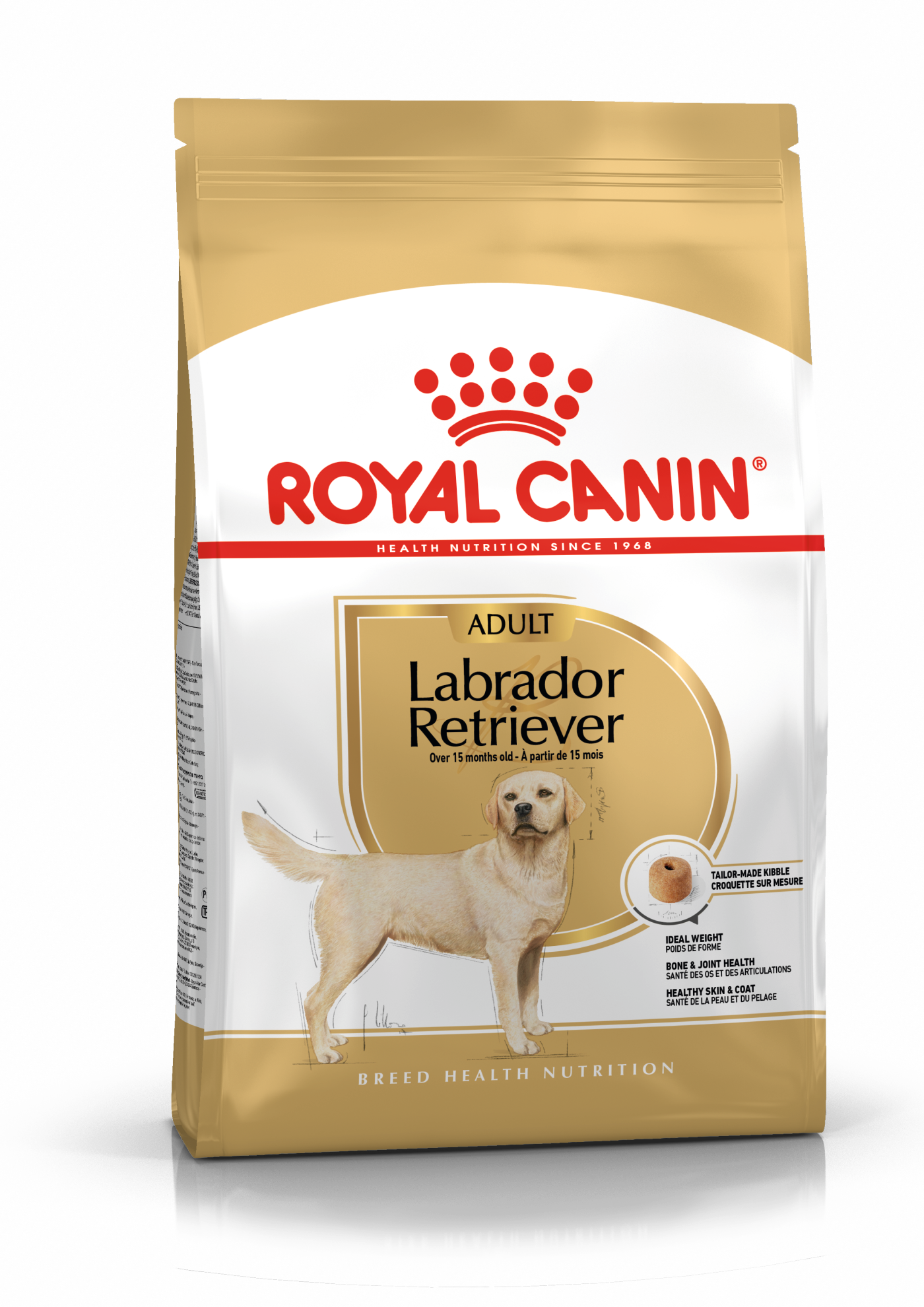
The main nutritional goals for adult Labrador Retrievers are:
Ideal Weight
Labrador Retrievers inherited a large appetite. Therefore, they require a carefully controlled diet to avoid becoming overweight. This formula helps them maintain an ideal weight via an appropriate calorie content.
Bone & Joint Health
Helping to support the health of their bones and joints with glucosamine, chondroitin, and EPA-DHA.
Healthy Skin & Coat
Nutrition plays a vital role in skin and coat maintenance. The formula helps to support skin and coat health with the enriched provision of essential fatty acids (especially EPA-DHA), essential amino acids, and B vitamins to support the skin's "barrier" function.
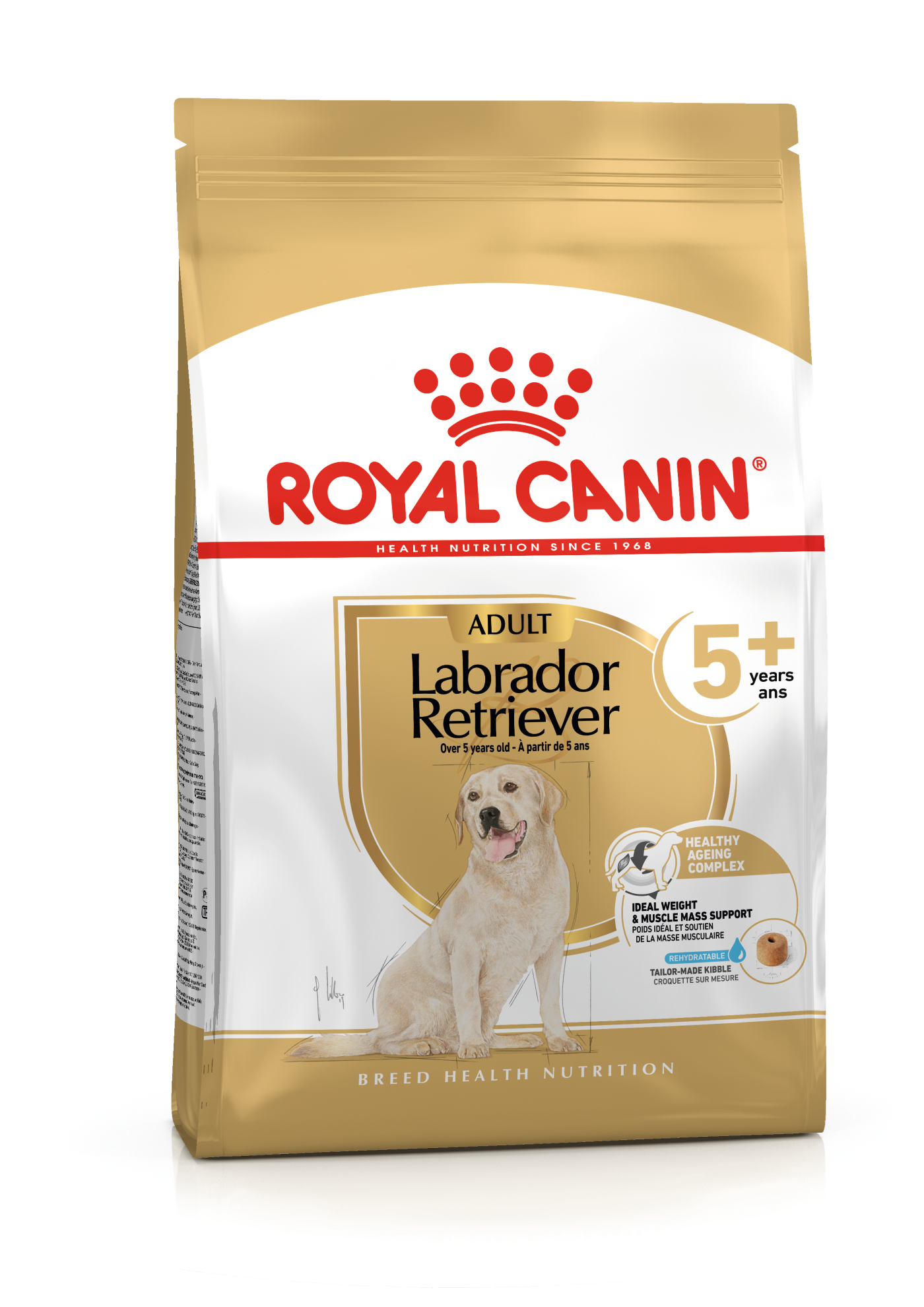
After 5 years old, Labrador Retrievers will start facing the first signs of
aging. A formula enriched with antioxidants will help maintain their
vitality, and specific nutrients, such as chondroitin and collagen, helps
support healthy bones and joints. Aging is accompanied by a change in nutritional requirements, so food for aging Labrador Retrievers should have the following characteristics:
Healthy Aging Complex
Labrador Retriever 5+ is developed to support healthy aging. The formula contains an exclusive combination of antioxidants to help maintain cellular health and is formulated with an appropriate phosphorus content to help care for the kidney health of Labrador Retrievers as they mature.
Ideal Weight & Muscle Mass Support
As the Labrador ages, the activity level decreases. This formula helps maintain their ideal weight with an adapted calorie content and helps maintain muscle mass with an adapted protein content and L-carnitine.
Joint Function Support
Formulated to provide advanced nutrients (including collagen, EPA & DHA) to help maintain healthy bones and joints by supporting cartilage during
the aging process.
Highly Palatable and Rehydratable Kibble
The shape and texture are adapted to the mature Labrador Retriever. The kibble may be softened with warm water, allowing for easy eating.
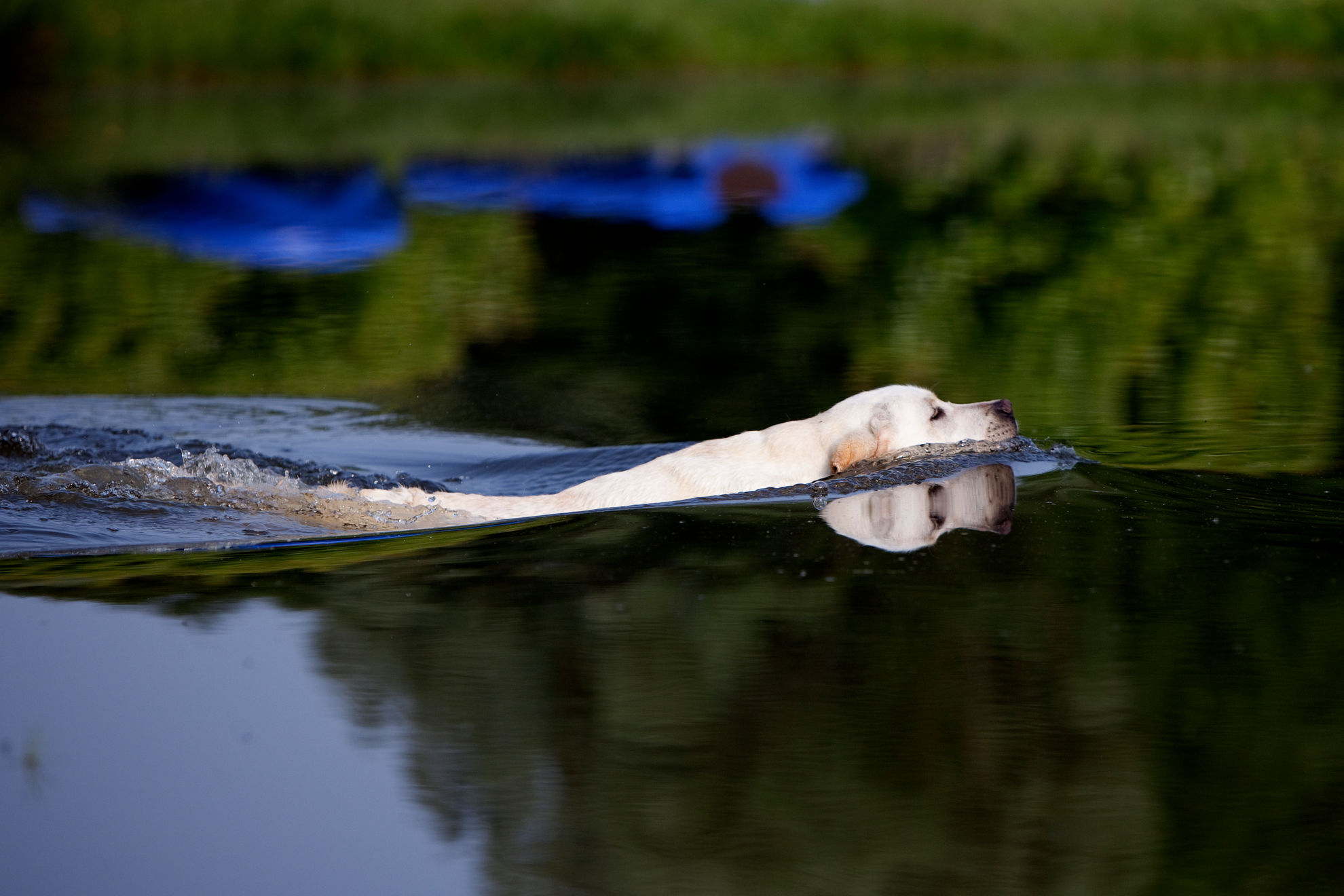
Caring for your Labrador Retriever
Grooming, training and exercise tips
Labradors are energetic dogs with high exercise needs. They thrive on daily activities like brisk walks, runs, or play sessions. Engaging in interactive games such as fetch, or agility training and swimming, helps satisfy their physical and mental stimulation needs. Without enough exercise, Labrador Retrievers are likely to be hyperactive and may display destructive behavior.
Retrievers have low-maintenance grooming needs. Regular brushing with a firm bristle brush helps manage shedding and keep their coat healthy. Occasional baths with a mild dog shampoo maintain cleanliness. Trim nails regularly to prevent overgrowth. Their short, dense coat requires minimal grooming compared to longer-haired breeds. Also, maintaining good dental hygiene is important for your Lab's overall long-term health.
With the Labrador Retriever’s physical strength and high energy level, early socialization and puppy training classes are vital. And fun. Gently exposing a Labrador puppy to a wide variety of people, places, and situations between the ages of 7 weeks and 4 months while incorporating training will help them develop into well-adjusted and well-mannered adult dogs. For a Labrador, puppy training classes are part of the socialization process and help you, the owner, learn to recognize and correct any bad habits early. Labradors are devoted, intelligent, and enthusiastic companions who, with a little patience, will take to training well and return on time invested with tail-wagging great behavior.
Labradors are energetic dogs with high exercise needs. They thrive on daily activities like brisk walks, runs, or play sessions. Engaging in interactive games such as fetch, or agility training and swimming, helps satisfy their physical and mental stimulation needs. Without enough exercise, Labrador Retrievers are likely to be hyperactive and may display destructive behavior.
Retrievers have low-maintenance grooming needs. Regular brushing with a firm bristle brush helps manage shedding and keep their coat healthy. Occasional baths with a mild dog shampoo maintain cleanliness. Trim nails regularly to prevent overgrowth. Their short, dense coat requires minimal grooming compared to longer-haired breeds. Also, maintaining good dental hygiene is important for your Lab's overall long-term health.
With the Labrador Retriever’s physical strength and high energy level, early socialization and puppy training classes are vital. And fun. Gently exposing a Labrador puppy to a wide variety of people, places, and situations between the ages of 7 weeks and 4 months while incorporating training will help them develop into well-adjusted and well-mannered adult dogs. For a Labrador, puppy training classes are part of the socialization process and help you, the owner, learn to recognize and correct any bad habits early. Labradors are devoted, intelligent, and enthusiastic companions who, with a little patience, will take to training well and return on time invested with tail-wagging great behavior.
7/7
All about Labrador Retrievers
In a word, yes. They have double coats and that can mean quite a lot of shedding action for dogs like the Labrador. They shed their coats year-round, but even more in spring and winter. Staying on top of brushing – getting them used to twice a week brushing is a good idea – and grooming will help decrease the amount of dog hair clogging the vacuum each week.
Like any dog, your Labrador Retriever didn’t come into the world knowing all the rules. But they are ready and willing to learn and, with some solid lessons, you or a professional trainer can guide your Labrador puppy to understand what is expected of them. The Labrador temperament is one that innately wants to please, so they’ll pick things up relatively quickly. Early training is essential if you have children in the house, as for any breed.
Other breeds that might interest you
Read more on this topic
Sources
- ¹ https://www.woopets.fr/chien/race/labrador-retriever/
- ² https://www.woopets.fr/chien/race/labrador-retriever/
Like & share this page